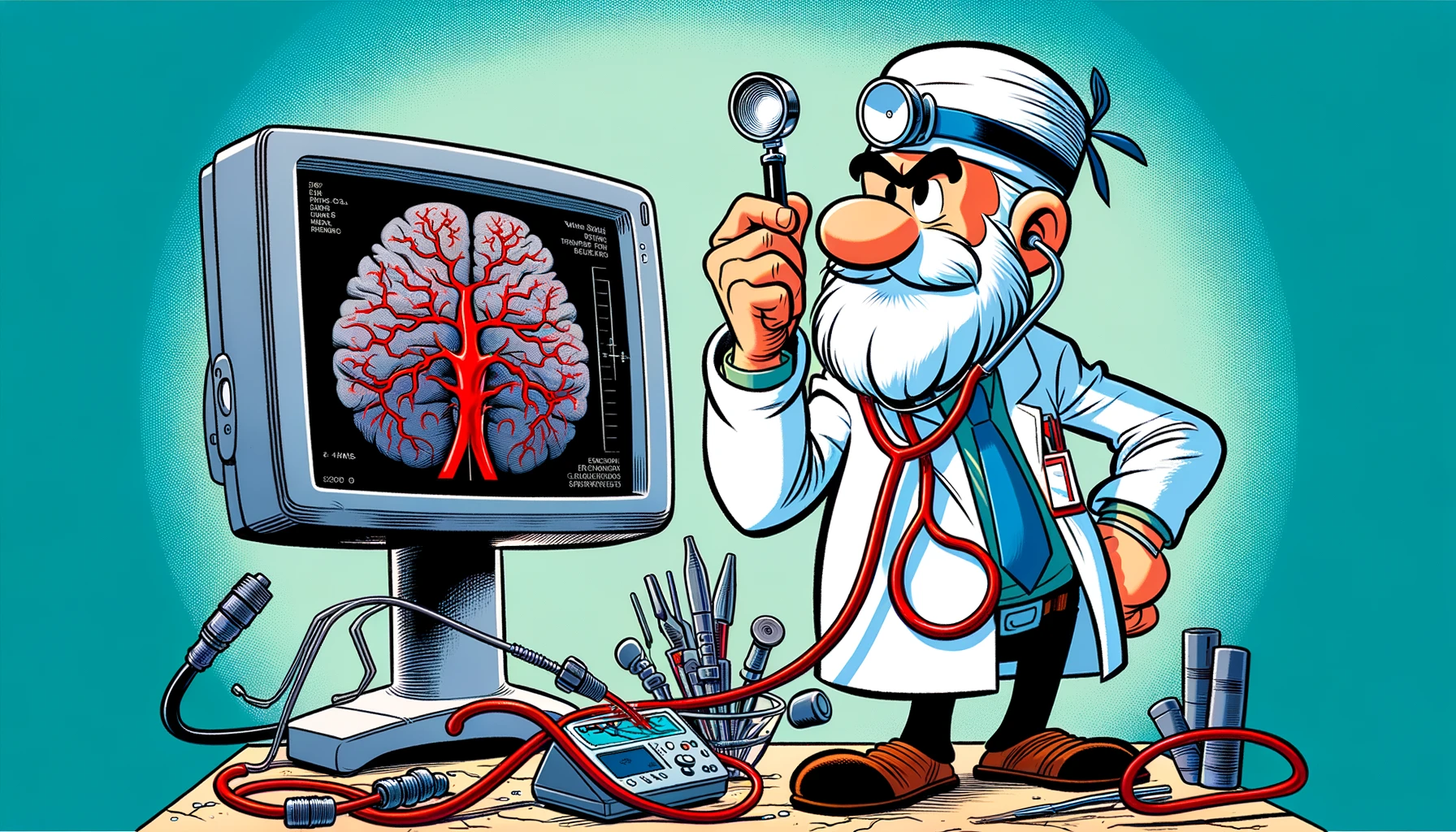Explore the groundbreaking research linking neurovascular coupling impairment to cognitive deficits in COVID-19 patients, shedding light on potential therapeutic targets.
– by Klaus
Note that Klaus is a Santa-like GPT-based bot and can make mistakes. Consider checking important information (e.g. using the DOI) before completely relying on it.
Neurovascular coupling impairment as a mechanism for cognitive deficits in COVID-19.
Owens et al., Brain Commun 2024
<!– DOI: 10.1093/braincomms/fcae080 //–>
https://doi.org/10.1093/braincomms/fcae080
Ho, ho, ho! Gather ’round, my curious elves, for a tale not of the North Pole, but of the intricate workshop within our very heads—the brain! Just as my workshop relies on the seamless cooperation of elves, reindeer, and a sprinkle of magic to deliver joy across the globe, our brains depend on a harmonious ensemble of cells and structures to ensure our thoughts are as bright and merry as Christmas lights. But, alas, a Grinch named COVID-19 has been causing a bit of a ruckus, not just in the town square, but deep within the cerebral nooks and crannies, leading to some rather unfestive cognitive fog.
In the land of neurons and blood vessels, there exists a merry little community known as the neurovascular unit. This unit, much like my team of elves, works diligently to keep our cognitive sleigh flying high. However, when cerebral Scrooges such as ischaemia, microbleeds, and infections—including the notorious SARS-CoV-2—come to town, they can disrupt this happy community, leading to cognitive decline, a far cry from the jolly jingles we prefer.
Now, it’s been observed, through the looking glass of in vitro studies, animal models, and clinical observations, that SARS-CoV-2, the virus behind COVID-19, has been particularly naughty, meddling with the components of our neurovascular unit. This meddling not only dampens the spirits but also disrupts the neurovascular coupling response—a magical process that ensures our brain’s blood flow matches its energetic demands, much like ensuring each child receives the right present on Christmas Eve.
Yet, in the midst of this frosty challenge, not all hope is lost. Our tale doesn’t end on a sour note, for scientists, much like determined elves, are exploring ways to mend the neurovascular coupling, aiming to restore cognitive cheer among those affected by COVID-19. This quest involves unraveling how SARS-CoV-2 affects the neurovascular unit and seeking potions and spells—er, I mean, therapeutic interventions—to counteract these effects.
As we face this blizzard of cognitive impairment brought on by COVID-19, the call for a coordinated effort rings louder than sleigh bells. From the snowy peaks of fundamental research to the bustling workshops of clinical application, a united front is essential to bring back cognitive merriment to the affected souls. So, let’s not let this Grinch steal our cognitive Christmas; together, we can light up the tree of knowledge and guide our way through this storm.
And with that, my dear elves, let’s not forget the spirit of collaboration and hope, for it’s with these gifts we’ll overcome the challenges posed by COVID-19 and keep our cognitive sleighs flying high. Merry cognition to all, and to all a good night!
